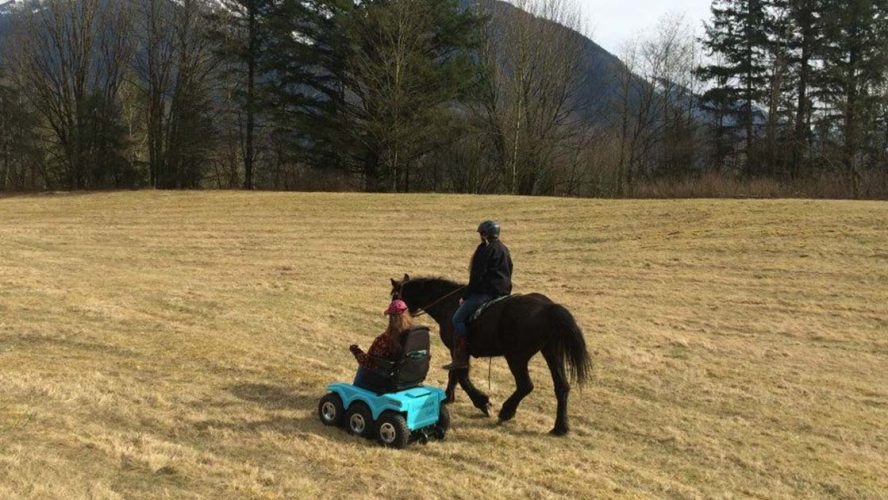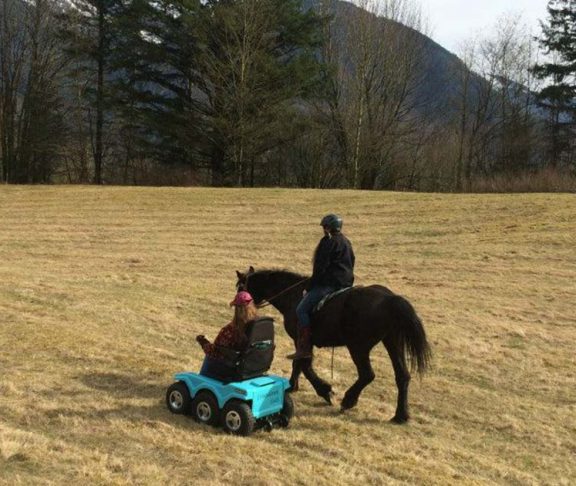
Dr. Aaron Izenberg
Neurologist, Sunnybrook Health Sciences Centre, Assistant Professor, Division of Neurology, University of Toronto
SMA treatments can help patients maximize independence and preserve functioning that’s vital to their daily lives, but access hurdles remain.
Holli Vander Wyk will graduate from the University of British Columbia next April and then pursue her Bachelor of Education on the way to her dream of becoming an elementary school teacher. The 24-year-old also works with her horse doing clicker training and is the Cure SMA Canada Family Camp Director.
This is a very different outlook than the one her parents were told to expect when she was a baby. “They basically told my parents to take me home and love me as long as they could because there was nothing they could do,” says Vander Wyk.
As a baby, after initially being able to crawl, Vander Wyk stopped and couldn’t bear weight on her feet. Soon after, she was diagnosed with type 2 spinal muscular atrophy (SMA), a rare and progressive neuromuscular disorder caused by a genetic mutation, which affects one in 6,000 babies born worldwide.
While SMA doesn’t affect intellectual capacity, it causes progressive physical degeneration and loss of motor neurons within the spinal cord, leading to muscle weakness and atrophy, particularly in the shoulders, hips, and back. Weakness in the legs is generally greater than in the arms. Sometimes feeding and swallowing can be affected, as well as the muscles involved in breathing and coughing, which can lead to an increased tendency for pneumonia and other lung problems. There are four types of the disease (1, 2, 3, and 4) based on key motor function milestones. Type 1 is the most severe form of the disease, while type 4 is the least severe.

Treatment options for SMA
Vander Wyk’s parents worked hard to maintain her mobility and strength. They set up an indoor pool in her garage for daily exercise. “The strength that I have today, I definitely have to thank my parents for that. Without them advocating and doing the best they could to make sure I had everything I needed, I wouldn’t be in the position I’m in today,” Vander Wyk says. “My disease has progressed over the years, but I’m still able to walk through water because I’ve been doing that since I was diagnosed.”
Vander Wyk, who uses a motorized wheelchair, says she struggles with fatigue, strength loss, and energy loss, and needs help with some daily tasks. She carefully balances school, her care and her social life to help maintain her energy.
Until recently, only supportive therapies, which include respiratory and nutritional support, orthopedic care, and physical and occupational therapy were available for people living with SMA. Now, there are new disease-modifying treatments that have been developed which may give some hope to people living with SMA.
“For adults, the hope is that these treatments can help preserve functioning,” says Dr. Aaron Izenberg, a neurologist at Sunnybrook Health Sciences Centre and an assistant professor in the Department of Medicine, Division of Neurology at the University of Toronto. “Though the evidence is more limited in adults than in children, it is possible that these medications could slow the progression of the disease. They could alter the trajectory in adults and preserve functioning, leading to a better quality of life and more independence.”
But Izenberg says it is difficult for adult patients to access these medications and that access varies between provinces. Some patients are able to do so through their private insurance companies or provincial government programs. ”The earlier these treatments are started, the more of an effect they will have,” he says.

Every small gain is a victory
Vander Wyk says these new treatments could be life-changing. “They affect everyone differently but even the smallest gains are a victory,” she says.
Recently, Vander Wyk started a treatment aimed at slowing the progression
of her disease. It’s too early to tell how her new treatment is affecting her, but Vander Wyk hopes it will help her continue doing what she loves, like ground training her horse, Fire, and becoming a teacher.
“I’ve always wanted to be a teacher. I love the idea of working with little kids and helping them become the person they’re going to be,” says Vander Wyk, who as a child would set up a classroom in her home to “teach” her younger sister.
Vander Wyk grew up attending SMA Camp, which is run by Cure SMA Canada. She is now a Camp Director. “The camp shows kids that they’re like everyone else. Kids can just be kids,” she says. “It’s one of the reasons I am who I am. I grew up being like, ‘I’m just like everyone else. I may do things differently but I will still do everything that everyone else does.’ I love being part of that for other kids.”
For people who don’t know much about SMA, Vander Wyk hopes they’ll educate themselves and help increase support from the government to fund research and access to treatments. She wants others with SMA to know that they’re strong. “There are always people out there who will support and love you no matter what,” she says. “Don’t give up and advocate for yourself.”
This article was brought to you by one of Canada’s leading research-based pharmaceutical companies.
References:
Cure SMA, “About SMA”, Available at curesma.org/about-sma/
Anderton RS, Mastaglia FL. Advances and challenges in developing a therapy for spinal muscular atrophy. Expert Rev Neurother. 2015;15(8):895-908. doi: 10.1586/14737175.2015.1059757. PMID: 26200127.
Fraser Institute, ‘Timely Access to New Pharmaceuticals in Canada, the United States, and the European Union.’ Available at: Timely


